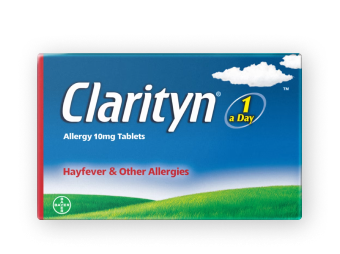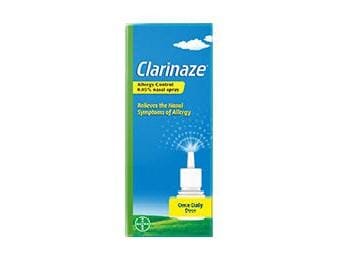
What is urticaria?
Urticaria is a red, raised, very itchy rash that can appear anywhere on the skin, including the face. It can be localised to one part of the body or spread across wider areas. Urticaria is more commonly known as hives , nettle rash, weals or welts.
It’s a common allergic reaction to a range of allergens, and is thought to effect around one in five people at some point in their lives, including adults and children.
It usually settles on its own in a few days, and often isn’t anything to worry about – even if the itch is irritating!
There are three main kinds of urticaria that you can be diagnosed with. These are:
- Acute urticaria – when the rash clears up within six weeks. Commonly associated with exposure to an allergy
- Chronic urticaria – when the rash persists for over six weeks, sometimes for months or years. This kind of urticaria is rarer
- Urticaria vasculitis – a very rare kind of urticaria which causes the blood vessels in the skin to become inflamed. This kind of urticaria can last for more than 24 hours and may be painful and can leave a bruise once the rash has cleared
While acute urticaria tends to clear up easily on its own, chronic urticaria can have more of a negative impact on a person’s overall wellbeing and quality of life. This is because the welts may make someone feel more self-conscious, and the itching can disrupt their sleep.
What are the main symptoms of urticaria?
The main symptoms of urticaria are a rash that is:
- Raised from the skin
- Very itchy
- Red, purple or skin coloured
- With patches that are round or oval in shape
Urticaria can occur anywhere on the body, and the rash (or welts) can vary in size. Sometimes, the itching sensation can feel similar to burning or stinging.
The colour of the rash will also vary depending on your skin tone. On white skin, urticaria is usually red. On brown or black skin, it may be harder to see. This means you have to look out for the other symptoms to be sure that you’re suffering from urticaria.

Causes of urticaria
Urticaria happens when a trigger causes your body to release chemical messengers like histamine in the skin. These chemicals cause your blood vessels to open up and swell, and can cause a rash. Histamine is often released when your body encounters an allergen , and your body is trying to remove it. However, it can also be released when you’ve got an infection like a cold, have been exposed to heat or cold or because you’re taking certain medications. Learn more about the link between histamines and allergies on our blog on allergic reactions, symptoms, triggers and treatments.
There are a range of factors that can result in you suffering from the different kinds of urticaria .
Acute (short-term) urticaria can be caused by:
- Food allergies - Common foods include fish and shellfish, peanuts, eggs and milk. Rarely, urticaria may be triggered by food additives
- An allergic reaction to environmental factors like pollen or dust mites
- Latex allergy
- Insect stings
- Viral illnesses
- Emotional stress
- As a side effect of taking certain medications, for example some kinds of antibiotics
- An allergic reaction to certain kinds of oral diabetes medicines or injectable insulin
- Medications like NSAIDs (nonsteroidal anti-inflammatory drugs) such as ibuprofen
There are also some very rare forms of acute urticaria which can be caused by certain physical triggers. These can include water, sunlight, pressure on your skin (like rubbing or scratching), doing exercise and changes in temperature (for example after being exposed to the cold or taking a hot shower).
It’s often harder to diagnose what causes chronic (long-term) urticaria. Some causes may be:
- Other chronic health conditions or diseases such as lupus or rheumatoid arthritis.
- An underactive or overactive thyroid gland.
- Liver infections.
If you suffer from chronic urticaria, you may find that some things can trigger or worsen your symptoms. Some of the common triggers of chronic urticaria include:
- Certain kinds of medication.
- Exposure to heat, cold, or water.
- Pressure on the skin.
- Insect bites or stings.
- Emotional stress.
- Alcohol.
- Caffeine.
- Certain kinds of food additives.
Treatment for urticaria
Often, urticaria doesn’t need to be treated and will clear up by itself. If it’s very uncomfortable or itchy, you can easily treat it at home using an oral antihistamine like Clarityn Allergy Tablets, which relieves the symptoms of allergies caused by over 150 airborne allergens.
If you’re living with chronic urticaria, there are a few steps you can take to get relief from your symptoms.
- Wear loose-fitting, baggy clothing that doesn’t rub
- Take a cool bath or shower using gentle products
- Avoid any known triggers.
If you’re diagnosed with chronic urticaria, your doctor may prescribe antihistamines until the symptoms have passed. They may also prescribe a menthol cream which helps to soothe itchiness.
If you have persistent urticaria that doesn’t go away in 48 hours, causes distress, disrupts your life or is occurring alongside other symptoms, you should talk to your doctor or other health care professional for further advice, testing and possible diagnosis.
Urticaria can also be one of the first signs of anaphylaxis . Anaphylaxis is an extremely serious severe allergic reaction, which should always be treated as a medical emergency.
The other signs of anaphylaxis are:
- Feeling lightheaded, dizzy or faint
- Swollen lips, and throat
- Breathing difficulties and wheezing
- Clammy skin
- Fast pulse
- Collapse or loss of consciousness
If you or someone you’re with has urticaria along with any of the above symptoms, you should call 999 immediately.






